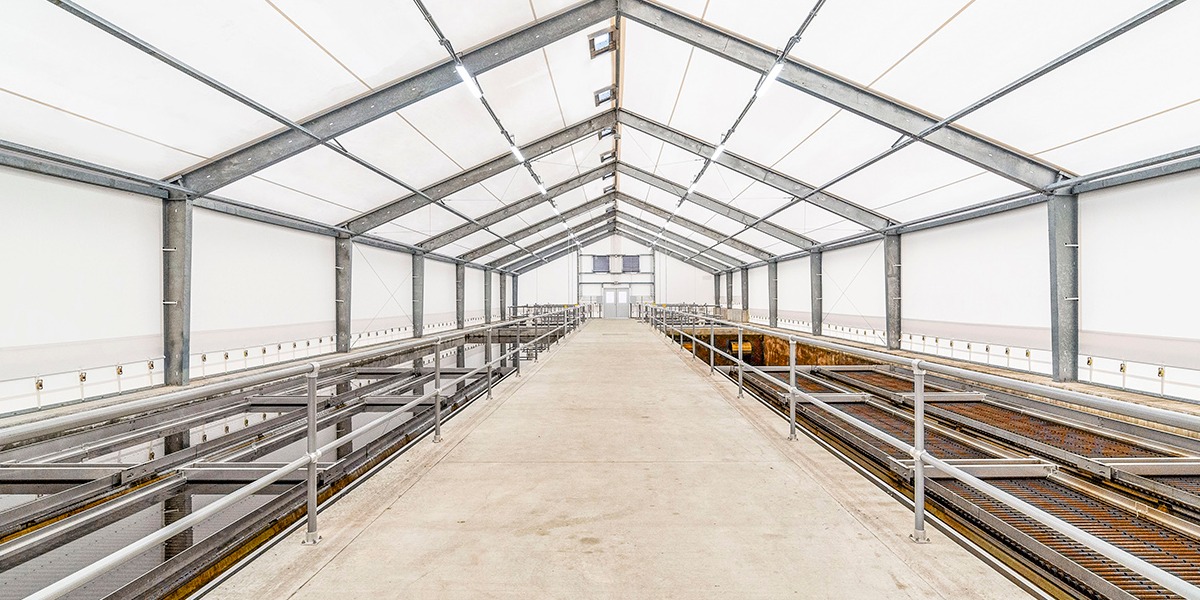Top 4 Benefits of Legacy Buildings for Wastewater Treatment Plants

Wastewater treatment is essential for maintaining a high quality of life in any community. A treatment facility that minimizes maintenance while maximizing efficiency is vital. Fabric structures offer several distinct advantages for wastewater treatment plants, including durability, efficiency, and cost savings. Here are the top four benefits of Legacy fabric buildings for wastewater treatment plants:
Enhanced Durability in Corrosive Environments
Wastewater treatment plants are always exposed to moisture and harsh chemicals. These conditions can corrode materials like steel. This corrosion leads to frequent maintenance and expensive replacements.
- Rust-Resistant Materials: The PE or PVC fabric used in Legacy buildings doesn’t rust, even under constant exposure to dampness and humidity.
- Corrosion Protection: Solid-framed fabric structures feature epoxy-coated steel frames, ensuring long-lasting protection. These structures also lack internal spaces where corrosion might develop undetected.
- Tightly Sealed Design: The fabric seals snugly around penetrations, minimizing air leaks. This helps control odors and meet regulatory standards. It also improves the efficiency of climate control and dehumidification systems.
Dryer Interiors for Improved Operations
Fabric structures offer a unique, climate-responsive building envelope that naturally reduces condensation.
- Reduced Condensation: Unlike steel sheeting, fabric does not conduct heat. It insulates better against temperature changes. This helps prevent moisture buildup inside the structure.
- Leak-Proof Attachment System: Legacy’s patented keder rail system securely attaches the fabric to the frame without small fasteners, eliminating potential leaks or drips.
- Dryer Environment: prevents corrosion and keeps materials dry. It also speeds up processes such as drying cake, sludge, and sediment. This ultimately improves the plant’s efficiency.

Unmatched Design Flexibility
Wastewater treatment plants must integrate seamlessly into their community and operations. Legacy structures are designed with flexibility to meet these needs.
- Customizable Aesthetics: The design can fit well with the area around it. It can also connect smoothly to nearby buildings using sealed joints.
- Safe and Efficient Construction: Spending less time on the roof during installation improves safety. This is especially true for buildings over important areas like pools or drying beds.
- Faster Build Times: Fabric cladding can be installed in about one-third the time of traditional steel sheeting. This reduces construction costs and speeds up project timelines. This means plants are operational sooner, saving taxpayer dollars.
Lower Maintenance and Lifecycle Costs
Legacy buildings deliver long-term savings through reduced maintenance and operational costs.
- Extended Building Lifespan: Fabric’s resistance to corrosion extends the building’s life while minimizing upkeep.
- Energy Savings: Natural light can permeate Legacy's white ExxoTec fabric walls and ceilings, reducing the need for artificial lighting and cutting energy costs.
- Healthier Environment: Brighter interiors help inhibit mold, mildew, and bacteria growth, creating a cleaner, safer facility.
Transform Your Wastewater Treatment Plant with Legacy Buildings
Legacy Building Solutions creates fabric structures for wastewater treatment plants. These structures tackle unique challenges while providing great durability, efficiency, and cost savings.
Contact us today to learn how a Legacy building can improve your wastewater treatment operations!
Subscribe to our Blog
Recent Posts
- 5 Factors Every Project Owner Should Consider Before Approving Building Materials
- The 20-Year View: How Material Choices Impact Long-Term Operational Costs
- Climate Resilience in Commercial Construction: Why Traditional Methods May Not Be Enough
- Speed and Quality: The Role of Hybrid Building Materials
- Beyond the Bleachers: Designing Visually Striking Sports Facilities
